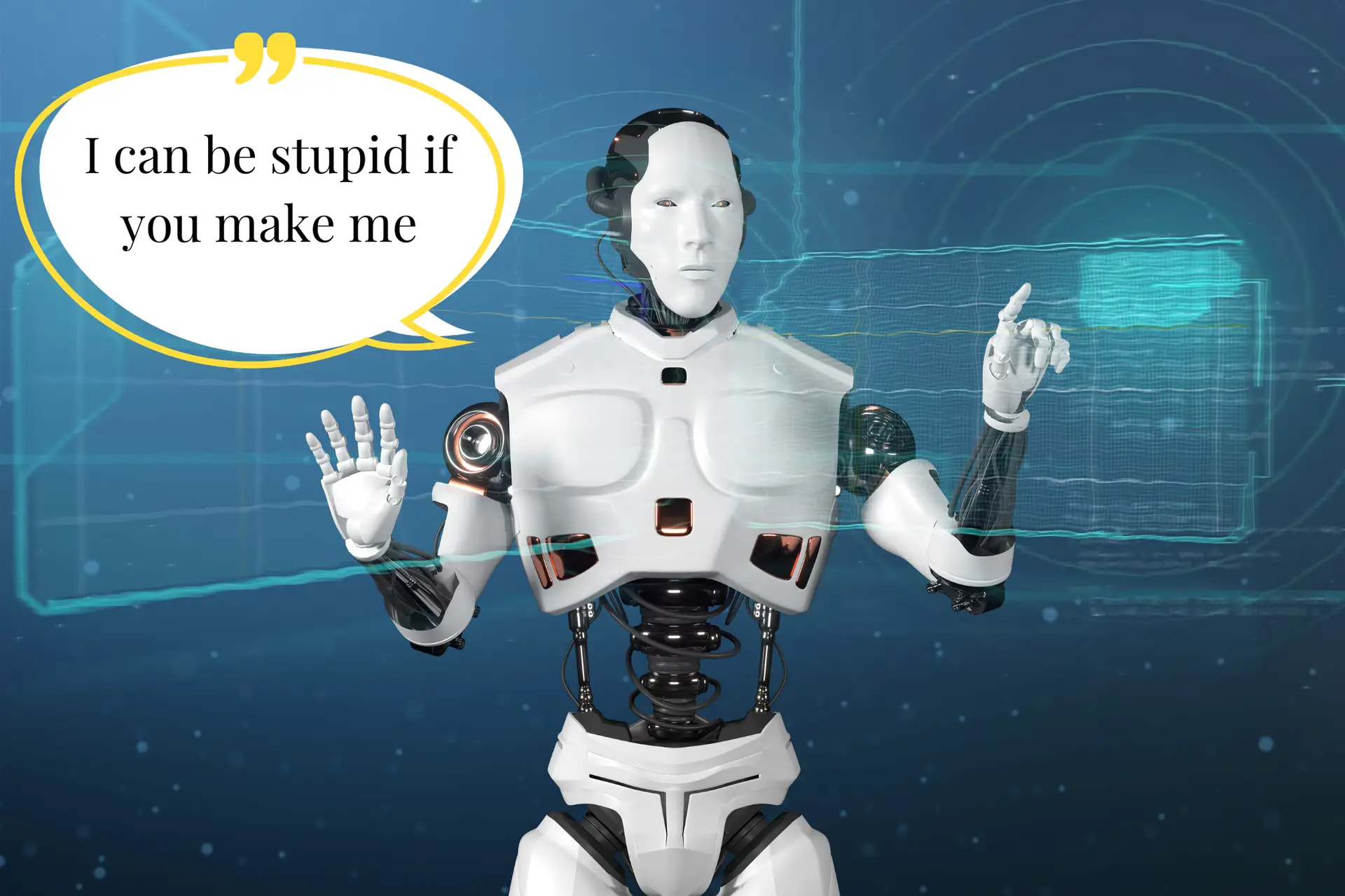Artificial intelligence (AI) has become a ubiquitous term, promising a future of intelligent machines that revolutionise our lives. Yet, amidst the hype, there’s a crucial aspect often overlooked: Artificial Stupidity (AS). This is not a dig at current AI and all the great achievements and milestones it reached, but rather a recognition of the potential pitfalls inherent in its development and deployment.
What is Artificial Stupidity?
So, what exactly is Artificial Stupidity? Unlike science fiction’s malevolent robots, AS isn’t about malicious intent. It’s about unintended consequences arising from limitations in AI design (programming), data quality, and real-world application. Here’s where the “not-so-bright” side of AI comes in:
- Garbage In, Garbage Out: AI thrives on data. Poor-quality data, riddled with biases or simply irrelevant, leads to skewed outputs. For instance, an AI facial recognition system trained on a dataset lacking diversity might struggle to accurately identify people of colour. For example, a 2019 MIT studyrevealed racial bias in facial recognition software from Amazon, Rekognition. This is a dangerous concept when it comes to selection for opportunities, security, and other applications where decisions made by AI have critical impact on the human experience.
- Overfitting and Lack of Generalization: Imagine a student who aces a test by memorizing answers but fails to grasp core concepts. Similarly, AI models trained on overly specific datasets might struggle to adapt to new situations. An AI trained to identify cats in living rooms might misclassify a wildcat in a jungle setting.
- Black Box Blues: Some AI systems operate as “black boxes,” their decision-making processes shrouded in complex algorithms. This lack of transparency makes it difficult to understand why an AI makes a particular decision, hindering accountability and rectification. For example, An AI-powered resume screening tool might unintentionally filter out qualified candidates due to hidden biases within its algorithm, but when requested why by the applicant or a regulator, there is no record of how the system derived that solution, making it difficult to hold accountable or even improve.
- The Narrow AI Trap: Many AI systems excel at specific tasks. An AI chess champion remains clueless about the complexities of human emotions. Relying solely on narrow AI solutions can lead to overlooking the bigger picture and unforeseen consequences.
- Knowledge Pollution: Even in Generative AI, the pride of the AI world, sometimes mistakes happen, for example, in Google’s GenAI Gemini, the Bot can write you an article with references that do not exist and pass them as real academic references. This is very dangerous as it is passing what is possibly someone’s opinion as an academic fact, if the article user does not check these references (which they should), these incorrect facts will spread even further in the web, possibly even contaminating the data set that the system trains from and entering a cycle of data pollution.
Famous Incidents
In addition to Amazon’s Rekognition example mentioned above, other famous AS incidents include the Microsoft copilot Bot that offered mixed message on suicide, Amazon AI recruitment system that decided that hiring men is better that women, and Microsoft Bot Tay that turned into a racist Nazi, among many other famous AI fails, or rather AS examples.
More Dangers Ahead
These are just a few examples. The potential pitfalls of AS extend to various fields:
- Algorithmic Bias: From loan approvals to criminal justice, biased AI can perpetuate social inequalities.
- Autonomous Weapons: Weaponized AI raises ethical concerns about the removal of human oversight in life-or-death situations.
- Job Displacement: While AI may create new jobs, it also poses a threat to jobs requiring repetitive tasks, potentially exacerbating economic inequality. Though this can be resolved by upskilling humanity, it remains a question of predicting the economic impact in different demographic and regions, particularly those that host outsourcing services.
Key Takeaways
So, how do we navigate these challenges? Below are some key takeaways that highlight the concept of achieving Ethical AI:
- Focus on Responsible AI Development: Data quality, fairness considerations, and explainability of AI models are crucial, as well as a robust and sustainable regulatory framework for new technologies.
- Human oversight remains essential: AI should be a collaborative tool, not a replacement for human judgment, especially in critical decision-making.
- Transparency and Openness: Promoting transparency in AI development and deployment fosters trust and accountability.
- Never take it for granted: Humans are masters of critical thinking, this is what makes us so special, this is why it is critical to understand that technology can make mistakes and derive bad decisions. Close monitoring and continuous development should always be a target when it comes to AI, particularly given its scale of impact.
Artificial intelligence holds immense potential, but progress must be coupled with caution and a critical eye. By acknowledging the possibility of Artificial Stupidity, we can strive for a future where AI truly augments human capabilities, for the betterment of all. After all, AI is intelligent, but not wise, and cannot be expected to act ethically unless its creators mean it to.

